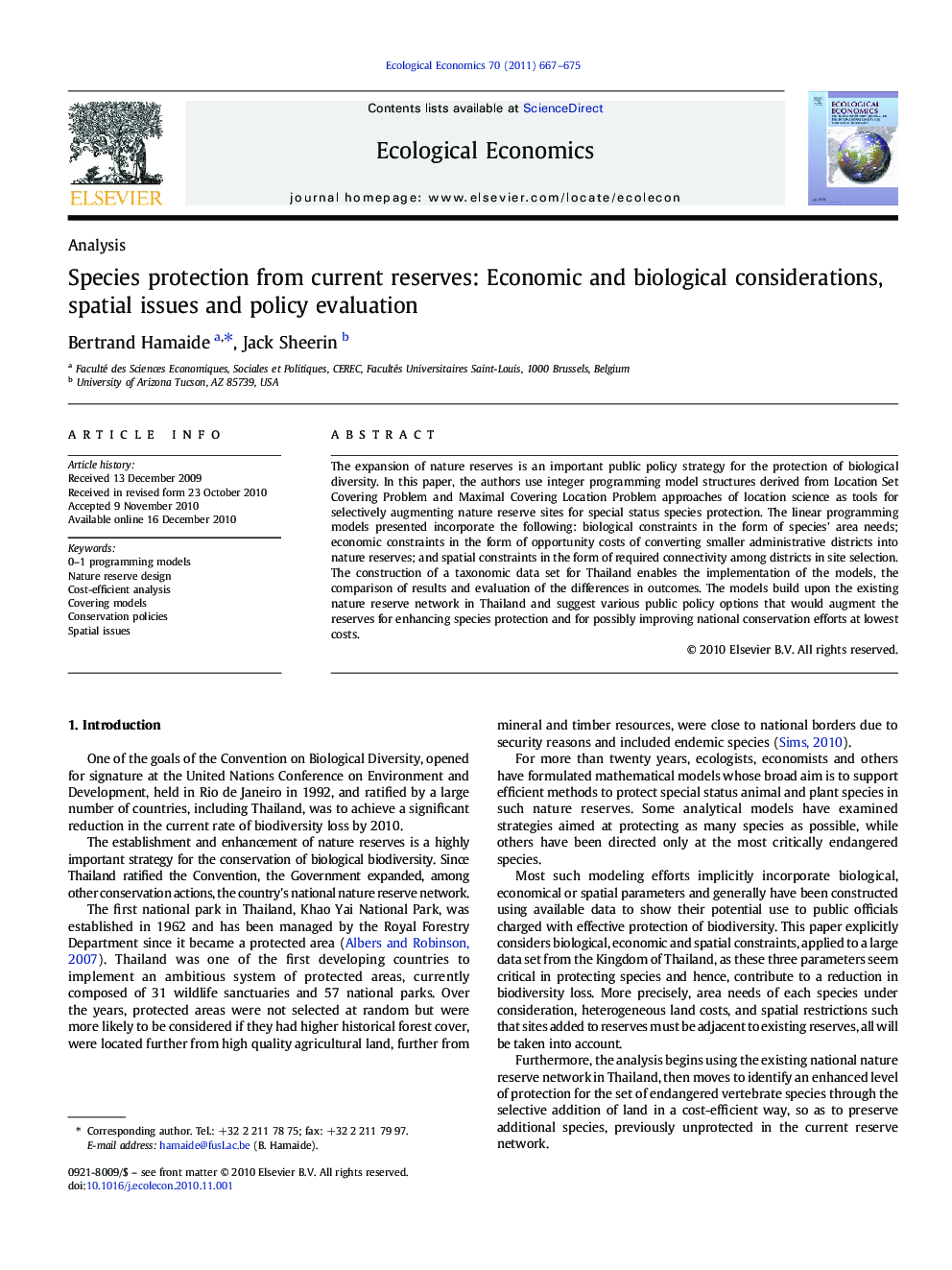| Article ID | Journal | Published Year | Pages | File Type |
|---|---|---|---|---|
| 5050773 | Ecological Economics | 2011 | 9 Pages |
The expansion of nature reserves is an important public policy strategy for the protection of biological diversity. In this paper, the authors use integer programming model structures derived from Location Set Covering Problem and Maximal Covering Location Problem approaches of location science as tools for selectively augmenting nature reserve sites for special status species protection. The linear programming models presented incorporate the following: biological constraints in the form of species' area needs; economic constraints in the form of opportunity costs of converting smaller administrative districts into nature reserves; and spatial constraints in the form of required connectivity among districts in site selection. The construction of a taxonomic data set for Thailand enables the implementation of the models, the comparison of results and evaluation of the differences in outcomes. The models build upon the existing nature reserve network in Thailand and suggest various public policy options that would augment the reserves for enhancing species protection and for possibly improving national conservation efforts at lowest costs.
Research HighlightsâºIn this paper, we formulate integer programming models derived from location science. âºModels aim at augmenting the current reserve network to protect critical species. âºThe models are applied to a data set for Thailand. âºModels include biological and economic constraints and are spatially conscious. âºSpecies protection can be improved at a modest cost but all of them may not be protected.
